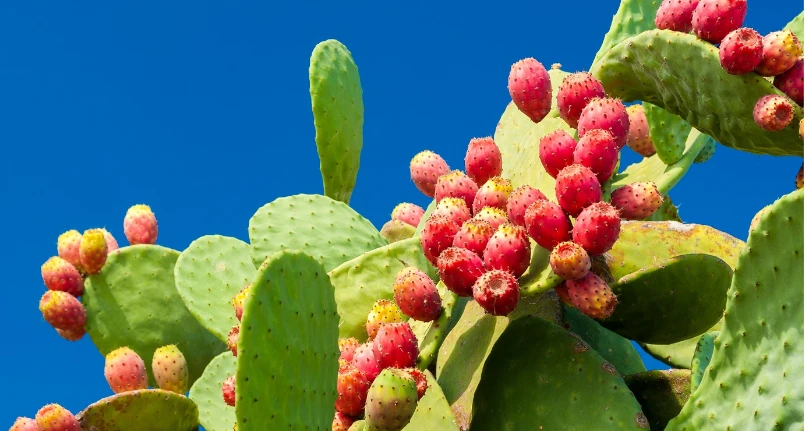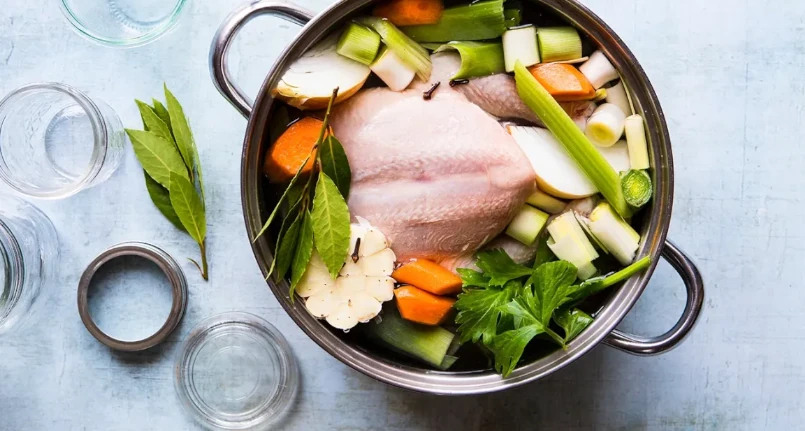Introduction
The prickly pear ( Opuntia ficus-indica L.) is a vegetable that belongs to the Cactaceae family , the same as the cactus and other succulent plants. The prickly pear is therefore a succulent plant which can exceed 3 meters in height and which produces very tasty edible fruits . Recent discoveries have also demonstrated how sustainable its cultivation is , and how versatile it is in food consumption , bringing significant benefits to the health of the organism.
A sustainable cultivation
The segments of the stem/stems are called cladodes (ellipsoidal and flattened in shape) and carry out all the vital processes such as photosynthesis usually entrusted to the leaves; the flowers and fruits of the prickly pear differ from them. In addition to presenting a variable number of spines, based on specific needs, the cladodes can give rise to real roots capable of taking root quickly in the ground. It is no coincidence that the simplest method for cultivating a prickly pear is not by sowing, but by directly planting a cladode (with a shovel) in the damp earth, which will take root in a very short time.
Its cultivation, widely practiced in South America, especially in Peru, is sustainable: the prickly pear plant is able to absorb little water which keeps it moist for a long time . Abundant irrigation, in fact, would end up causing it to rot. A crop that tolerates drought and extreme temperatures well. These are characteristics that make it one of the 50 foods of the future , with a view to increasingly sustainable diets . Not only that, its cultivation is able to reduce the emission of carbon dioxide into the atmosphere.
Prickly pears: fruits with beneficial properties
The fruits of the prickly pear are berries containing numerous woody seeds (which should not be consumed in abundance especially if you suffer from constipation ). They have a variable shape (round or elongated) and a weight that can approach 400g with difficulty. The skin, smooth and with colors ranging from red to orange, yellow and green, is covered with more or less evident thorns, including glochids, tiny thorns that are particularly insidious and difficult to remove even from the skin. For this reason it is practically mandatory to clean the fruit wearing gloves and using a brush . Many attribute nutritious properties to prickly pear and beneficial, among which: laxative of the pulp, astringent of the seeds and antioxidant ( vitamins and tannins ). These fruits are rich in vitamins, especially vitamin C, and minerals, including magnesium and potassium . They also contain many fibers that help intestinal peristalsis by counteracting constipation disorder . In reality, the effect of the prickly pear on the intestine is of a modulatory type, thanks to the presence of viscous fibers such as pectin and mucilage in the pulp, and other active ingredients predominantly astringent contained in the seeds.
The prickly pear fruit is particularly rich in water, and therefore a hydrating fruit . In 100 grams, 83 grams are made up of water. Calories , on the other hand , are 53 per 100g and sugars 13%. Thanks to the high water content, the prickly pear boasts thirst-quenching , diuretic and purifying properties . For these reasons it is often recommended by specialists to expel kidney stones . Prickly pears contain two particular types of dietary fiber, pectin and xylose, which make them suitable to be included in the diet of diabetics as well .
| Edible part | 64.0g | |
| Waterfall | 83.2g | |
| Protein | 0.8g | |
| TOTAL lipids | 0.1g | |
| Saturated fatty acids | – g | |
| Monounsaturated fatty acids | – g | |
| Polyunsaturated fatty acids | – g | |
| Cholesterol | 0.0mg | |
| TOTAL Carbohydrates | 13.0g | |
| Starch | – g | |
| Soluble sugars | 13.0g | |
| Dietary fiber | 5.0g | |
| Power | 53.0kcal | |
| Sodium | 1.0mg | |
| Potassium | 190.0mg | |
| Iron | 0.4mg | |
| Soccer | 30.0mg | |
| Phosphorus | 25.0mg | |
| Thiamine | 0.02mg | |
| riboflavin | 0.04mg | |
| Niacin | 0.40mg | |
| Vitamin A | 10.0µg | |
| C vitamin | 18.0mg | |
| Vitamin E | – mg | |
Prickly pear, versatile in the kitchen: how to use it
The prickly pear, in addition to being eaten fresh in its pulp, after having been carefully cleaned and peeled, is a very versatile fruit in the kitchen. Suffice it to say that in South America, but also in Europe and in southern Italy where it is found in abundance, it is used in the preparation of ice creams , jams , organic juices, marinated peels, syrups and even pancakes. Not only that, the pulp of this fruit rich in beneficial properties can be used in the preparation of savory dishes such as fish ceviche , accompany cheeses , or in tasty salads .
Use of prickly pears in cosmetics
The nutritional properties of prickly pears are not only precious for the body but also for beauty. In fact, lotions, creams, oils and hair care products are formulated with their pulp and with the oil extracted from the seeds . According to research in the cosmetic field, prickly pears promote hair growth , acting directly on the hair bulb . Prickly pear oil and its emollient properties make it suitable for the treatment of stretch marks , especially during pregnancy. Moisturizing and elasticizing, it is appreciated as an oil to be used after a bath in case of dry skin .




